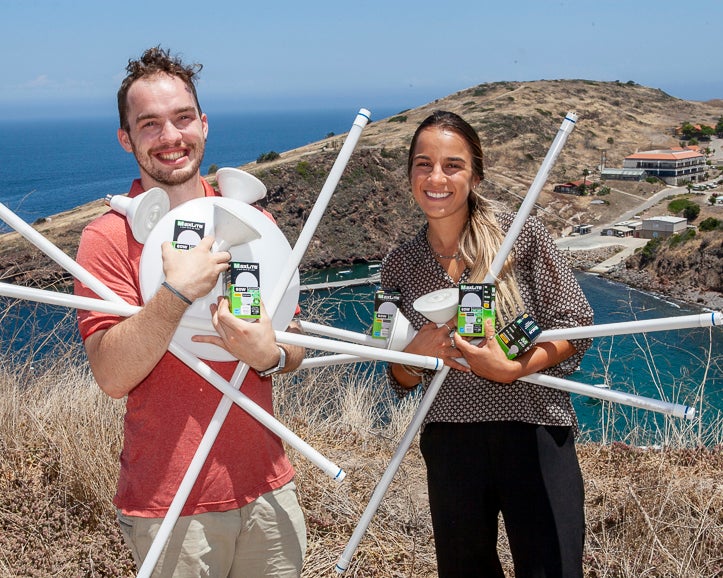Real-World Sustainability Experiments
At the Wrigley Marine Science Center (WMSC) on Catalina Island, sustainability isn’t just what we study–it’s what we do every day.
Experimental and established sustainability solutions help power our operations as staff collect data to measure the impact. Our goal is to both test and benefit from sustainability best practices and new technology, in hopes of inspiring others to do the same.
Keep scrolling to learn about some of our key sustainability initiatives and where we hope to go in the future!
Solar Power
The solar panels on our dining hall were USC’s very first solar installation! They provide a portion of the electricity needed to power the WMSC kitchen and housing.
We’re also in the early stages of a multi-year project to construct a solar microgrid for our campus. Ultimately, we expect to supply approximately 90% of our electrical needs through solar power.
You can see real-time data from our current solar panels through the dashboard at the link below. (The link may take a few seconds to load.)

Dining
The WMSC dining hall focuses on sustainable practices. These include:
- Sourcing produce within a 150-mile radius
- Purchasing sustainably-raised meat proteins that include wild game
- Providing vegetarian and vegan options for every meal, and regularly serving all-vegetarian meals
- Using compostable takeaway containers and utensils
- Using reusable table settings in the dining hall
To help reduce food waste, we allow diners to serve themselves, so they can take only as much food as they plan to eat. And our food dehydration system converts food waste and paper napkins to compost, which helps keep our plants healthy, reduces their need for supplemental water, and reduces the carbon footprint of waste removal.

Vehicle Fleet
The WMSC vehicle fleet is used for transporting students, staff, researchers, and equipment around our campus and to other locations on the island.
Sixty-one percent of our fleet is currently electric, helping to keep Catalina Island’s pristine air clean, and we seek to replace worn-out gas-powered vehicles with electric versions.
We also rarely wash our vehicles (the ones in the photo are brand-new), to help conserve the island’s precious water resources.

Energy-Efficient Upgrades
Just like you, we don’t like big electric bills! While our solar projects make us more sustainable on the supply side, we’re also upgrading our campus to be more efficient about the amount of electricity we consume.
We’ve converted all our light fixtures to LED, purchased Energy Star appliances for the dining hall kitchen, and are installing tinted, insulated windows as we update our campus buildings.

Water Conservation and Native Landscaping
Though it’s surrounded by the ocean, Catalina Island itself is an arid environment, so we carefully watch every drop of water we use. Shower timers and signage remind visitors to conserve water, and we use drought-friendly landscaping and rain barrels to help manage our watering needs.
Through our Green Ravine project, we’re also gradually transforming the ravine that runs the length of our campus into a varied, flourishing landscape dotted with rock dams and native plants.
The result isn’t just nice to look at – it reduces our need for watering, supports native wildlife and pollinators, reduces wildfire risk, and helps slow and filter runoff before it reaches the Marine Protected Area at the foot of the hill.
